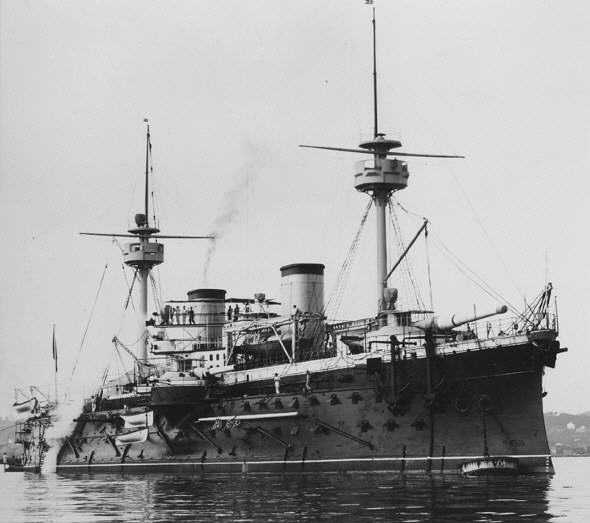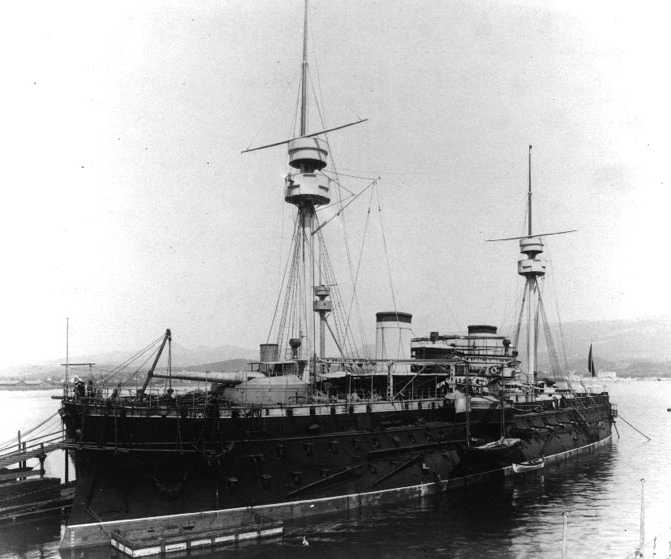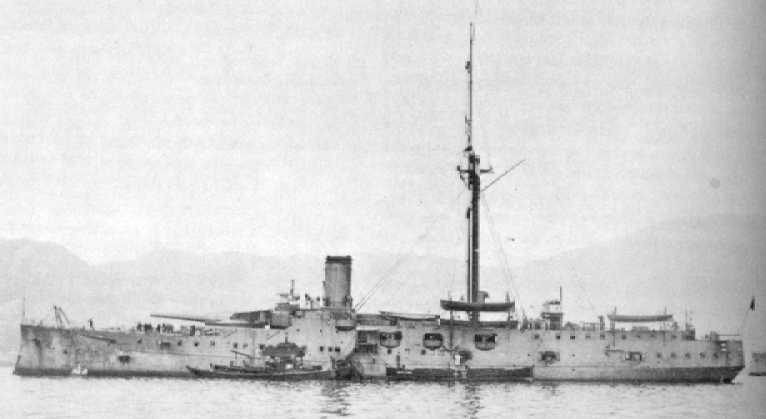|
Also in 1884, Admiral Antequera of the Spanish Navy proposed a large naval shipbuilding program that included six ocean battleships. To arm these ships, the Spanish armament firm of Hontoria purchased a manufacturing license from Canet for their 32 cm gun. However, Admiral Antequera’s program was greatly scaled back and only the battleship Pelayo was completed. The actual size of the Spanish gun was 32 cm/37.5 (12.6"), but in official Spanish Naval documents it was almost always listed as 32 cm/35 (12.6") or rarely as 32 cm/40 (12.6"). The Japanese guns were constructed by Schneider & Co, Chalon-sur-Saone, and built according to the general principles of the Canet system. The inner tube was imported from Britain and overlaid with five outer tubes, which were manufactured in France. Two-thirds of the barrel was covered with up to ten layers of wire. The breech mechanism was a cylindrical breech screw with a de Bange obturator pad. The gun was fired by percussion. The original Japanese Naval designation was 12.6"/38. I believe that in 1908 they would have been designated as 12.6"/38 (32 cm) 41st Year Type and that in 1917 they would have been redesignated as 32 cm/38 (12.6") 41st Year Type. |

Battleship Pelayo about 1889
|

Battleship Pelayo about 1889
|

Japanese second-class cruiser Hashidate
at Kure in November 1908
|